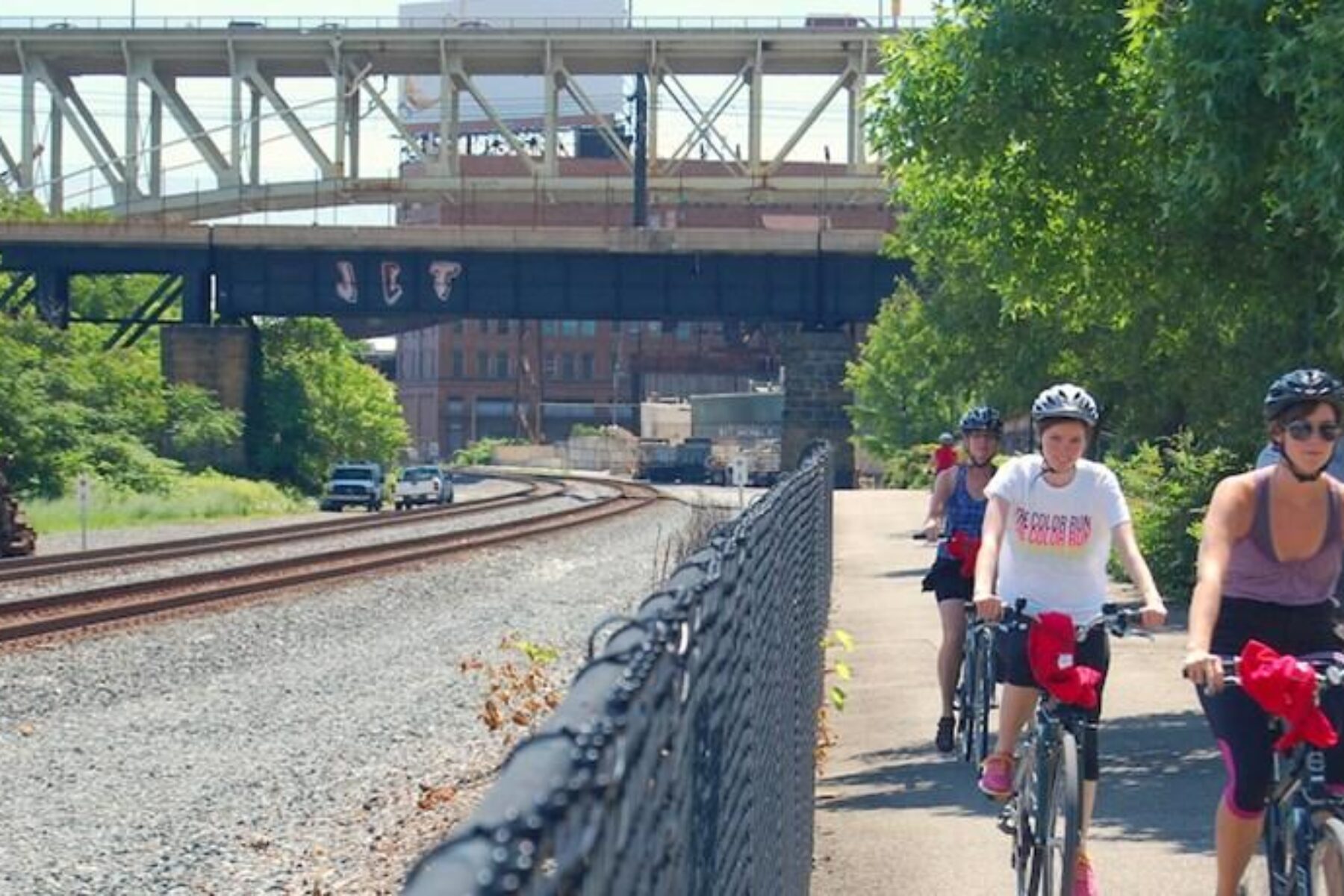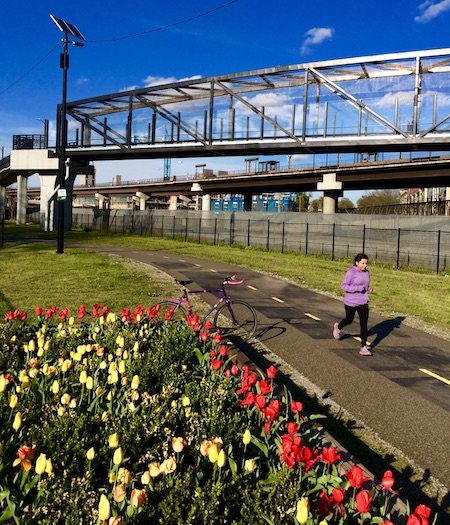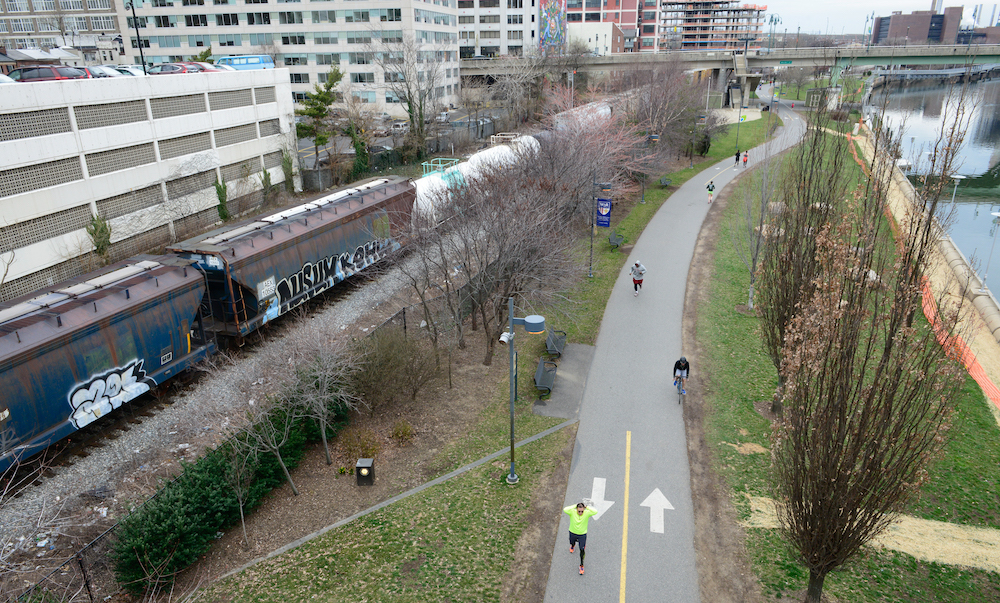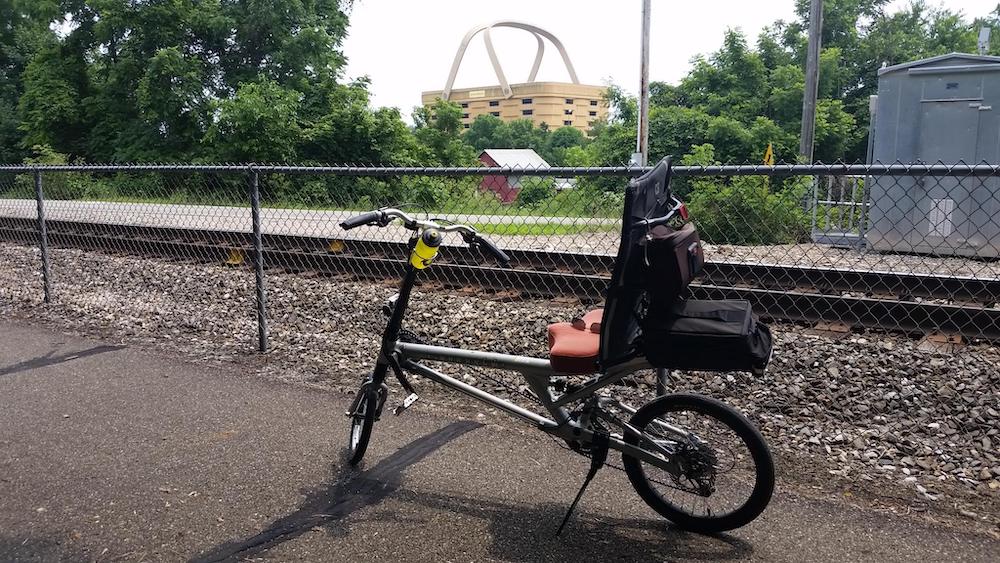New USDOT Report Provides 25 Years of Lessons Learned for Rails-with-Trails

The U.S. Department of Transportation (USDOT) recently released Rails-with-Trails: Best Practices and Lessons Learned—a long-awaited update to its first release, published in 2002. Offering in-depth insights on the design, development, operations and benefits of rails-with-trails across the country, the report has served as an authoritative resource for trail builders for nearly two decades.
Defined as trails that run adjacent to, or within, active railroad corridors (passenger and freight), rails-with-trails can maximize the potential of transportation corridors while expanding connectivity within, and between, communities. In 2002, there were 65 known rails-with-trails comprising 279 miles in 30 states. In 2018, that number jumped to more than 343 rails-with-trails in 47 states spanning an estimated 917 miles, demonstrating the growth in popularity over the last decade and a half.
The new report, developed with support from more than 100 trail managers (representing some 30% of the country’s rails-with-trails), shares new insights on this growing trend in U.S. transportation.
What Is a Rail-with-Trail?
Rails-with-trails are multiuse pathways that run adjacent to, or within, an active rail corridor, providing opportunities for connectivity and enhanced transportation. These innovative solutions enable communities to construct and benefit from rail-trails in areas alongside active rail lines and transit corridors, including light rail.
Visit RTC’s Trail-Building Toolbox for more rails-with-trails resources, including an image library, a list of open rails-with-trails, past research and more.
Summary and Key Findings
Prepared by the Federal Highway Administration (FHWA) for the U.S. Department of Transportation, the updated report presents a new state of the practice, and addresses common concerns, challenges and facilitating factors to consider before, during and after rail-with-trail development. Please note that while the content includes best practices and lessons learned from a variety of stakeholders—including railroad officials, public agencies, trail planners and trail users from across the country—the report does not constitute a standard, specification, regulation or endorsement of rails-with-trails by USDOT or FHWA.
Key findings are as follows:

- Community Demand as a Catalyst: Community demand for trails as part of safer, more integrated multimodal transportation networks has been a continued catalyst for the growth of rails-with-trails in almost every state. In particular, rails-with-trails are often seen as a way to close gaps in off-road nonmotorized transportation networks. However, notwithstanding their continued growth, rail-with-trail developers continue to face many of the same challenges as they did decades ago.
- Increasing Trend of Rails-with-Trails Along Passenger/Transit Lines: The majority of rails-with-trails (68%) are located along Class I, II or III railroads. Although most Class I railroads (the nation’s largest railroads) appear to view trails as an incompatible use within the right-of-way of an active railroad, public transportation agencies, while sharing some of the same concerns, often recognize that rails-with-trails can be assets to surrounding communities and the public transit network. Since 2000, there has been an increasing trend of building rails-with-trails along passenger rail and rail transit lines with adequate separation distances.
- Collaborative Approach Is Key: Rails-with-trails are not appropriate in every situation, and developing one requires a collaborative approach among railroads, trail developers and communities to address safety, capacity and liability issues. Ultimately, successful rail-with-trail design delicately balances the operational, maintenance and safety requirements of a railroad with the specific needs and characteristics of trail users and the surrounding community.
Don’t Miss:
“America’s Rails-with-Trails” (Rails-to-Trails Conservancy, 2013), a resource for planners, agencies and advocates on trails along active railroad corridors.
Benefits of Rail-with-Trail in Action

As outlined in this report, rails-with-trails have gentle grades and provide vital connections between communities—sometimes creating safe, controlled crossings for busy active rail lines. Among the many benefits of rails-with-trails, access to transit via active transportation remains a key highlight.
A great example of this phenomenon is the 8-mile Metropolitan Branch Trail—part of the larger nearly 900-mile Capital Trails Network—connecting Northeast Washington, D.C., and Silver Spring, Maryland. The busy urban trail offers vital transportation links to many of the city’s neighborhoods, and also shares a corridor with Washington Metro’s Red Line, MARC Train Service and Amtrak—in addition to a CSX freight line—making it an ideal mixed-use commuting corridor.
Additionally, the Interurban Trail (South) outside of Seattle is heavily used by work commuters and provides vital connections to public transit in an area with increased congestion, thus promoting lower-impact means of travel and the environmental benefits that come with it.
The new report highlights many additional benefits generated by rails-with-trails, including increased walking and bicycling connectivity and economic development. The Schuylkill River Trail in Pennsylvania, for example, has greatly benefited from both. Part of the developing 800-mile Circuit Trails system in the Greater Philadelphia–South Jersey area, the Schuylkill River Trail connects rural areas to the city core with the aid of rail-with-trail segments that have filled critical gaps in the network.
The trail also gives residents the ability to walk, bike or roll to the region’s historic and cultural destinations like Valley Forge, Boathouse Row, Fairmount Park and the Philadelphia Museum of Art—as well as business, employment and shopping districts—supporting tourism and commerce.

For those outside city centers, rail-with-trail projects have offered countless benefits to trail users for recreation and connecting with nature. The T.J. Evans Panhandle Trail in Central Ohio follows the Ohio Central Railroad for its entire 9.8-mile length and is heavily used by the surrounding community for recreational walking and biking through the state’s Amish Country. Wisconsin’s La Crosse River State Trail travels over 18 miles along an active rail corridor, boasting views of farmland, prairie land and marshlands. The trail ends in Sparta, where rail-trails and cycling haves long been part of the town’s history.
As rail-with-trail continues on an upward trend in America, communities and trail managers are working together with railroads and transit agencies to determine the most safe and viable design, construction, management and maintenance practices needed to develop these innovative facilities. The new report offers valuable insights for this rising trend, and will serve as a definitive resource for those seeking to create safe, impactful rails-with-trails in their communities for years to come.
Get more information and download the report on the FHWA website.

Donate
Everyone deserves access to safe ways to walk, bike, and be active outdoors.
